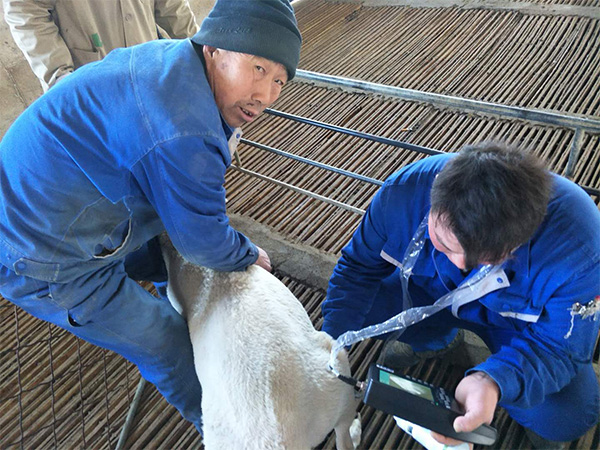The diagnosis of pregnancy in sheep is usually performed using a sheep ultrasound machine for ultrasound examination, as rectal palpation is impractical due to the size of the animal. Linear array rectal ultrasound examination is a commonly used method as it allows operators to view the fetus, determine the number of fetuses, and collect measurements of the fetus to determine its age. One commonly used measurement method for estimating fetal age is head hip length (CRL). In addition to CRL, other measurements used to estimate sheep gestational age include head width and chest depth, as well as bilateral skull and trunk diameters. These studies have not shown that the number of fetuses has an impact on the estimated fetal age based on the collected measurement data. Audible Doppler ultrasound is also used for ewes, sows, mares, and cows.
What is the gestational age of sheep measured by rectal ultrasound in sheep

Starting from the 28th day after successful mating (Day 0), fetal measurements will be collected weekly based on crayon markings and no longer in estrus period. Place the ewe in a supine position in a flipped cradle for transrectal ultrasound examination. The sheep uses a B-ultrasound instrument with a 5/7.5 MHz linear array, and the switchable transducer is set to 5 MHz for all examinations or a 5 MHz linear array intracavity probe. Use a rectal probe to couple Doppler ultrasound to battery powered headphones to measure audible fetal heart rate.
Due to the size of the fetus and the penetration depth of the 5-mHz probe in sheep using B-ultrasound, the head hip length CRL cannot be consistently measured before 28 days and after 42 days, and visual fetal heart rate cannot be consistently detected before 28 days and after 70 days. The audible fetal heart rate cannot be consistently detected before 35 days of age, but it can be measured using Doppler ultrasound until 140 days of age. Pregnancy in ewes can be detected as early as 16 years old using a 7.5 MHz probe. Sheep can measure the diameter of the fetal biparietal and thoracic vertebrae between gestational days 49 and 140 using a B-ultrasound device.
There was no difference in CRL between singleton and multiparous ewes at 28 days (P>0.10), but the CRL of singleton ewes at 35 days (P<0.0008) and 42 days (P<0.02) was higher than that of multiparous ewes, with no difference in head length between 1, 2, or 3 lambs per litter.
Regardless of the number of fetuses, existing methods developed using other breeds of sheep can estimate the fetal age of wool sheep breeds with acceptable accuracy. Developing a system that utilizes measurements beyond head hip length, such as cranial diameter or chest diameter, to expand the number of days during pregnancy that can estimate fetal age may be beneficial. Due to the ability to monitor audible and visible fetal heart rate for more days during pregnancy, it may be more fully developed as a tool for estimating fetal age.
tags: Sheep use B-ultrasoundsheep ultrasound machine


